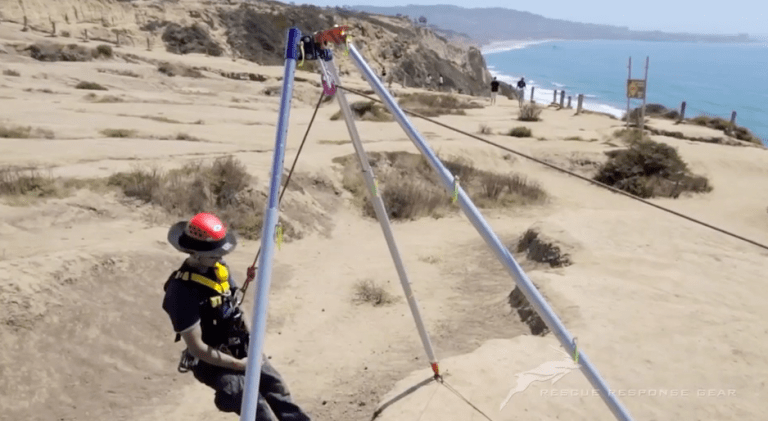The Arizona Vortex is a versatile artificial high directional (AHD) system designed to facilitate safe and efficient rope rescue operations across various challenging environments. Its modular design allows for multiple configurations, making it an essential tool for rescue professionals.
Key Configurations of the Arizona Vortex
The Arizona Vortex can be assembled into several configurations to suit specific rescue scenarios:
- Tripod Configuration: Ideal for vertical access in confined spaces, providing a stable overhead anchor point.
- Bipod (A-Frame) Configuration: Suitable for edge transitions, such as cliff rescues, where horizontal reach is necessary.
- Monopod (Gin Pole) Configuration: Used in situations requiring a single high directional point, often in narrow or restricted areas.
These configurations enhance the system’s adaptability, allowing rescuers to tailor the setup to the demands of the operation.
Specifications
| Specification | Measurement |
|---|---|
| Minimum Height | 9 ft (2.7 m) |
| Maximum Height | 12 ft (3.7 m) with additional legs |
| System Weight | 72 lb (33 kg) with both foot sets |
| Maximum Breaking Strength (MBS) | 36 kN (8,093 lbf) |
| Certification | NFPA 1983 (2017 ED) – General Use |
Note: The system’s height can be adjusted by adding or removing leg sections to accommodate various operational needs.
Advantages in Rescue Operations
The Arizona Vortex offers several benefits that enhance rescue operations:
- Edge Transition Facilitation: By positioning the high directional close to or over the edge, rescuers can load their weight onto the system before transitioning, reducing physical strain and improving safety.
- Load Resultant Management: Proper alignment of the system ensures that the resultant force remains within the footprint of the Vortex, maintaining stability during operations.
- Versatility: Its ability to configure into tripod, bipod, and monopod setups allows for adaptability across diverse rescue scenarios, from industrial accidents to wilderness rescues.
For a comprehensive understanding of the Arizona Vortex’s applications and setup, refer to the Arizona Vortex User Manual.
Conclusion
The Arizona Vortex stands as a critical asset in modern rope rescue operations, offering flexibility, stability, and efficiency. Its thoughtful design and adaptability make it indispensable for rescue teams aiming to perform safe and effective operations in complex environments.
Peace on your Days…
Lance











9 thoughts on “Arizona Vortex configurations”
Great line up. We will be linking to this great article on our site. Keep up the good writing.
Hi there! This post couldn’t be written any better! Reading through this post reminds me of my previous room mate! He always kept talking about this. I will forward this article to him. Pretty sure he will have a good read. Thank you for sharing!
Great line up. We will be linking to this great article on our site. Keep up the good writing.
217023 939021Utterly composed topic material , thanks for selective information . 679509
501017 952866I think this internet website has extremely superb composed topic material articles . 392500
64187 176489But wanna say that this really is extremely useful , Thanks for taking your time to write this. 402930
I like the valuable information you provide in your articles. I’ll bookmark your blog and check again here regularly. I am quite sure I’ll learn lots of new stuff right here! Best of luck for the next!
I’ve been surfing on-line greater than 3 hours lately, but I never discovered any interesting article like yours. It is pretty worth sufficient for me. In my view, if all web owners and bloggers made good content material as you did, the web will be a lot more useful than ever before. “I thank God for my handicaps, for through them, I have found myself, my work and my God.” by Hellen Keller.
350289 45118Well worded post will be sharing this with my readers this evening 522600
Comments are closed.